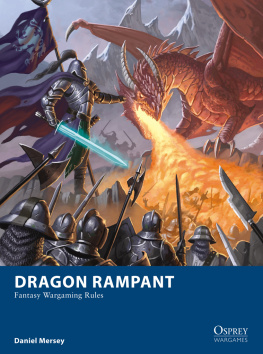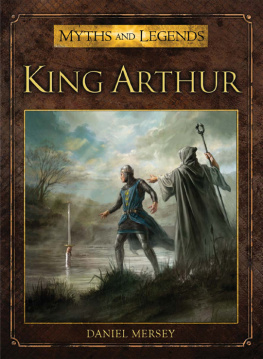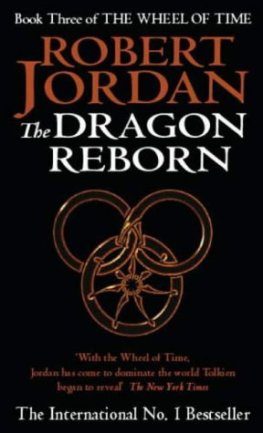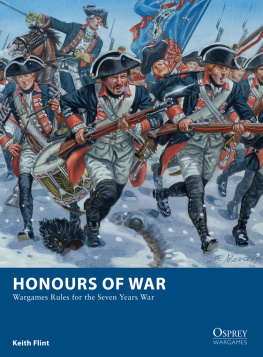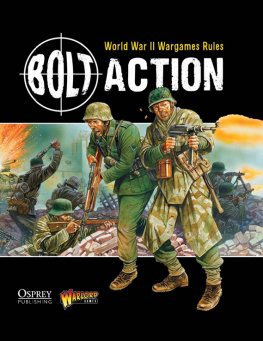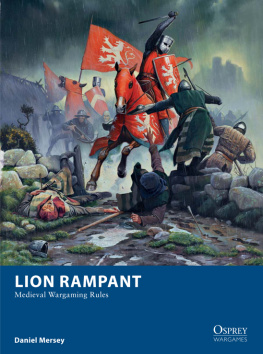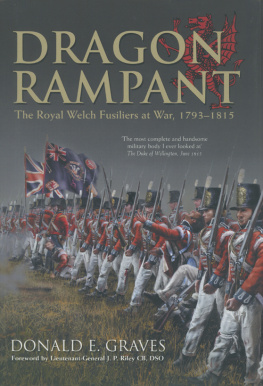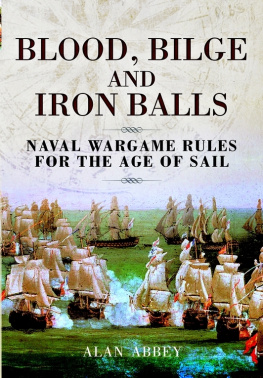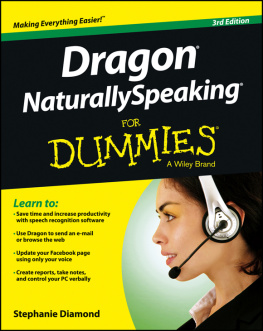
Acknowledgements
As has been the case with all of my rule sets, I've received some wonderful help and support along the way; this time I'd like to thank everyone who has contributed to this project in any way big or small but especially: Philip Smith at Osprey, the ever genial Henry Hyde of Miniature Wargames with Battlegames magazine, Annie Norman of Bad Squiddo Games, Arjun Choong, Mark Copplestone, Nick Eyre of North Star, Kevin Dallimore, Nic Robson of Eureka, Leon Pengilley of Pendraken, Ronnie Renton of Mantic Games, Darrell Hindley of Just Add Water Painting Service, Spencer Williams, Paul Baldwin, Mark Carter-Greaves, Ralph Plowman, Matt Slade of Glenbrook Games, my old fantasy gaming chums whether we're still slaying trolls together or not, and members of the Dux Rampant forum for their various inspirational and civilized comings and goings.
Copyright holders are identified in the photograph captions. One thousand blessings to everyone who submitted photos, and Im sorry I could not use them all.
As a reward for those people who bother to read the small print, heres a secret spell Im especially fond of that doesnt quite fit into the canonical ten. Feel free to use this when youre playing at someone elses house.
Replenish me!
Difficulty: 8+
Target: One opposing player
Duration: Immediate action
Effect: Nominate the target player before testing for success. If successful, that player must go and get you a drink and selection of nibbles of your choice. No arguments, it's written right here in the rules.
First published in Great Britain in 2015 by Osprey Publishing,
PO Box 883, Oxford, OX1 9PL, UK
PO Box 3985, New York, NY 10185-3985, USA
E-mail:
Bloomsbury is a registered trademark of Bloomsbury Publishing Plc
This electronic edition published in 2015 by Bloomsbury Publishing Plc
Osprey Publishing, part of Bloomsbury Publishing Plc
2015 Daniel Mersey
All rights reserved
You may not copy, distribute, transmit, reproduce or otherwise make available this publication (or any part of it) in any form, or by any means (including without limitation electronic, digital, optical, mechanical, photocopying, printing, recording or otherwise), without the prior written permission of the publisher. Any person who does any unauthorised act in relation to this publication may be liable to criminal prosecution and civil claims for damages.
A CIP catalogue record for this book is available from the British Library Daniel Mersey has asserted his right under the Copyright, Designs and Patents Act, 1988, to be identified as the author of this book.
Print ISBN: 978-1-4728-1571-2
PDF e-book ISBN: 978-1-4728-1572-9
EPUB e-book ISBN: 978-1-4728-1573-6
www.ospreypublishing.com
Osprey Publishing supports the Woodland Trust, the UKs leading woodland conservation charity. Between 2014 and 2018 our donations will be spent on their Centenary Woods project in the UK.
CONTENTS
. INTRODUCTION
Welcome to Dragon Rampant, a set of simple miniature wargaming rules for fighting fantasy battles for fun: free from official miniature ranges, never-ending supplements, and irritating army list revisions. The rules are model scale-neutral, although many gamers choose 28mm armies; 15mm is more cost effective and better suited to the storage of large creatures such as dragons and giants, so is welcomed with equally open arms/tentacles. You may play using individually based models or communal bases holding several models (which means that 10mm and 6mm armies may also be used).
In a magical, fairy-tale world long ago known to some as the 1980s I was a fantasy gamer. I'd discovered Dungeons & Dragons from adverts in my Dad's old Military Modelling magazines and the TV cartoon. It was amazing! I was introduced to roleplaying at school, as a natural progression from Fighting Fantasy game-books, and dabbled with historical wargaming. And then the two worlds met: around 1990 I played my first fantasy miniatures wargame (Dwarves versus green Orcs and Goblins). Fantasy worlds were soon left behind as I headed off to the historical Dark Ages and medieval periods, but I continued to flirt with fantasy armies using historical rules. When I realized that my Lion Rampant medieval rules could also work for small fantasy battles, I included a brace of fantasy armies in the Lion Rampant rulebook, but Dragon Rampant fleshes out what I started with those two lists.
I favour abstraction and stylization to facilitate quick and streamlined play. Battlefield confusion and chaos means that you might not get to use every one of your units in every turn of the game, so start thinking about your unit's priorities during the game even before you've taken your first move of the game. Troop types and units are defined by their fighting characteristics rather than by race, weaponry, or individual prowess.
A number of pages in this book include sections of Lion Rampant verbatim; this is especially true of the Battle Rules section, so that players already familiar with the rules can easily see what remains the same and what is different. I hope that readers will see this as a positive, intended to make the transition from medieval to fantasy gaming (and vice versa) as smooth as possible. My design goals for Dragon Rampant tell you how I approached reworking the Lion Rampant rules for this new setting:
Keep it fun. The emphasis is on a playable fantasy-themed game rather than an over-detailed simulation of battle.
Create a modern day throwback to 1970s and 1980s fantasy wargaming (in a positive way!): allow players breathing space to create their own worlds rather than forcing them to be tied to a line of miniatures.
Use no unusual dice, cards, or supplements make it accessible for gamers new to the hobby.
Keep the rules simple, streamlined and abstracted where appropriate: don't make players continually thumb through the rulebook.
Quick play and minimal record-keeping to allow multiple games in a session.
Don't reinvent the wheel: use Lion Rampant core rules as much as possible to represent different types of monsters and attacks.
Let scenarios drive the game and make the victory conditions interesting and feel like a narrative story. Give players extra goals in each scenario to allow different ways to win.
Offer malleable army selection: no hard and fast army lists tied to manufacturers' ranges.
Don't allow magic or monsters to overpower gameplay: all troop types are equally valid in the right circumstances.
Embrace classic fantasy stereotypes: baby-eating ogres are fierce, elves are excellent archers, and goblins cackle as they ride their wolves over your corpse.
My overall goal was to design a fantasy miniatures game that is simple to learn, easy to adapt to your own preferred fantasy setting, and that gives me the same excitement I had when I discovered fantasy gaming in the 1980s. As a consequence, this book is dedicated to Richard Halliwell, Rick Priestley, and Bryan Ansell, whose fault it all is.
WHAT YOU'LL NEED TO PLAY DRAGON RAMPANT
To play a game of Dragon Rampant

